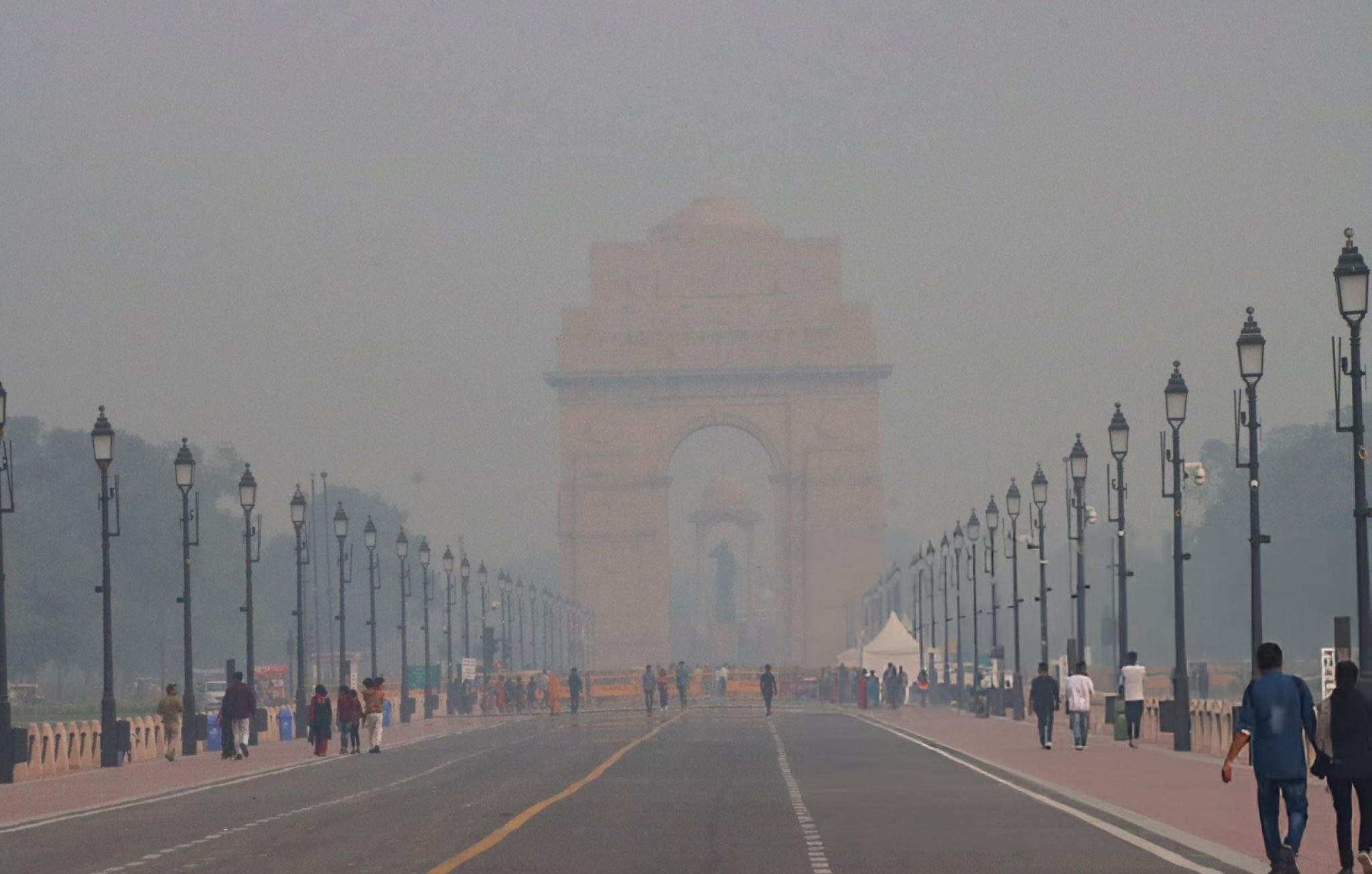Delhi has emerged as the most polluted city in India, with an alarming surge in air pollution levels. According to a report released on Thursday by Respirer Living Sciences, the capital recorded an average PM2.5 level of 243.3 micrograms per cubic metre (µg/m³), marking a 19.5 per cent increase week-on-week. This puts Delhi in the last position out of 281 cities analysed for air quality between November 3 and 16.
PM2.5 Levels and Their Impact
The report reveals that the primary pollutant driving this crisis is PM2.5—fine particulate matter measuring 2.5 micrometres or smaller, roughly the diameter of a human hair. These particles are small enough to penetrate deep into the lungs and enter the bloodstream, causing significant health risks, including respiratory issues, heart disease, and strokes. The Central Pollution Control Board (CPCB) has consistently highlighted the dangers posed by these particles, which are often the result of vehicular emissions, industrial activities, and stubble burning.
A Perfect Storm of Pollution
The recent spike in pollution levels can be attributed to a combination of factors. The onset of cooler winter temperatures has trapped pollutants close to the ground, exacerbating the impact of ongoing pollution sources. Stubble burning in nearby states, along with emissions from vehicles and industrial activities, has compounded the problem. The report also noted that pollution in Delhi is part of a larger regional crisis affecting the Indo-Gangetic Plain, with several northern states, including Uttar Pradesh, Haryana, and Punjab, also recording hazardous air quality levels.
The seasonal onset of winter, coupled with temperature inversions and reduced wind speeds, has further exacerbated pollution levels. In this context, pollutants that would typically disperse into the atmosphere during warmer months are instead being trapped closer to the surface, creating a thick layer of smog.
Shifting Patterns and Growing Concerns
Ronak Sutaria, Founder and CEO of Respirer Living Sciences, spoke to PTI about the concerning findings from the analysis. He highlighted that the surge in pollution levels around November is now becoming a significant trend, in contrast to previous years when the worst pollution levels were usually observed between mid-December and February.
“This shift not only highlights an unusual trend but also raises serious concerns about what we might face in the coming months,” Sutaria said. The report stresses the need for urgent action, as pollution levels in Delhi appear to be worsening earlier in the season than expected.
Localised Pollution in Delhi
One of the more striking findings in the report was the disparity in PM2.5 levels within Delhi itself. The municipal limits of Delhi recorded PM2.5 concentrations up to 100 µg/m³ higher than surrounding areas such as Gurugram, Ghaziabad, and Faridabad. This suggests the presence of localised pollution sources within the city, which may require immediate attention from authorities to mitigate their impact.
Sutaria also raised concerns over the potential inaccuracies in monitoring systems, which may not be capturing the full extent of pollution in certain areas. He suggested that further investigation into these discrepancies is warranted.
Other Regions Fare Better
While Delhi and other northern cities struggle with severe pollution, the analysis also pointed out regions in southern and northeastern India that enjoy significantly better air quality. Cities like Imphal in Manipur (14.2 µg/m³) and Ariyalur in Tamil Nadu (15.0 µg/m³) were cited as examples of cleaner air. These regions benefit from favourable geography, fewer industrial activities, and effective local interventions aimed at reducing pollution levels.
Air Quality Index and Measures
As of the latest readings, Delhi’s 24-hour average Air Quality Index (AQI) was recorded at 371, still in the “severe” category, though it had slightly improved from the previous day’s AQI of 419. On Sunday, Delhi’s air quality was classified as “severe,” prompting authorities to impose the GRAP-IV measures, which include restrictions on construction activities, the closure of schools, and a halt to non-essential vehicle use. Despite these measures, the air quality deteriorated further on Monday and Tuesday, with the AQI exceeding 450 and reaching the “severe-plus” category.
For context, AQI readings are classified as follows:
- 0-50: Good
- 51-100: Satisfactory
- 101-200: Moderate
- 201-300: Poor
- 301-400: Very Poor
- 401-500: Severe
Given that Delhi’s AQI has been hovering in the severe range, concerns about public health continue to mount.
A Long-term Crisis
The worsening air quality in Delhi reflects a larger, ongoing environmental crisis that has plagued the city for years. With little sign of immediate relief, experts urge the government to implement stricter pollution control measures and improve monitoring systems. As the city heads into winter, the air quality crisis is expected to intensify, and residents are being advised to take precautions, especially those with pre-existing health conditions.
Without a long-term strategy to tackle the root causes of pollution—ranging from vehicular emissions to industrial output and agricultural stubble burning—Delhi’s air quality is likely to remain a serious public health concern.







